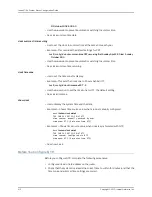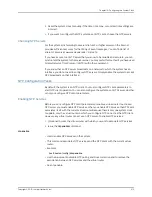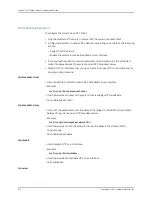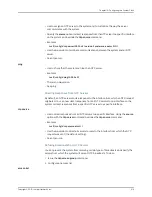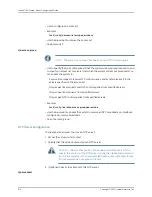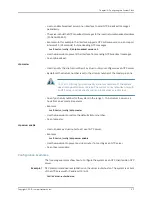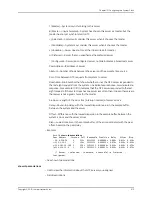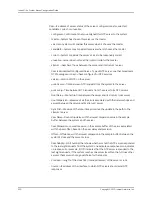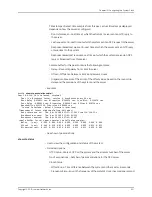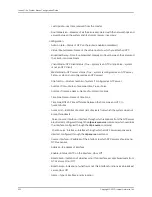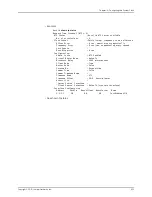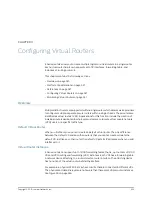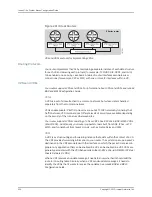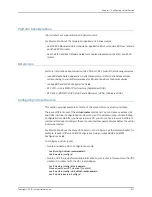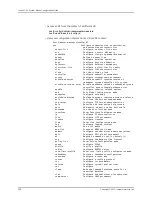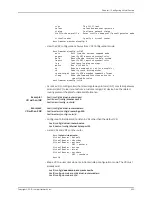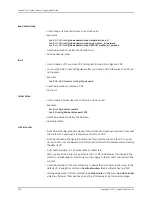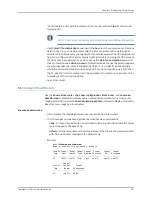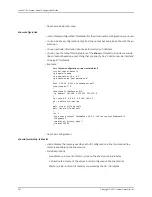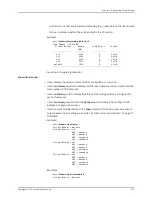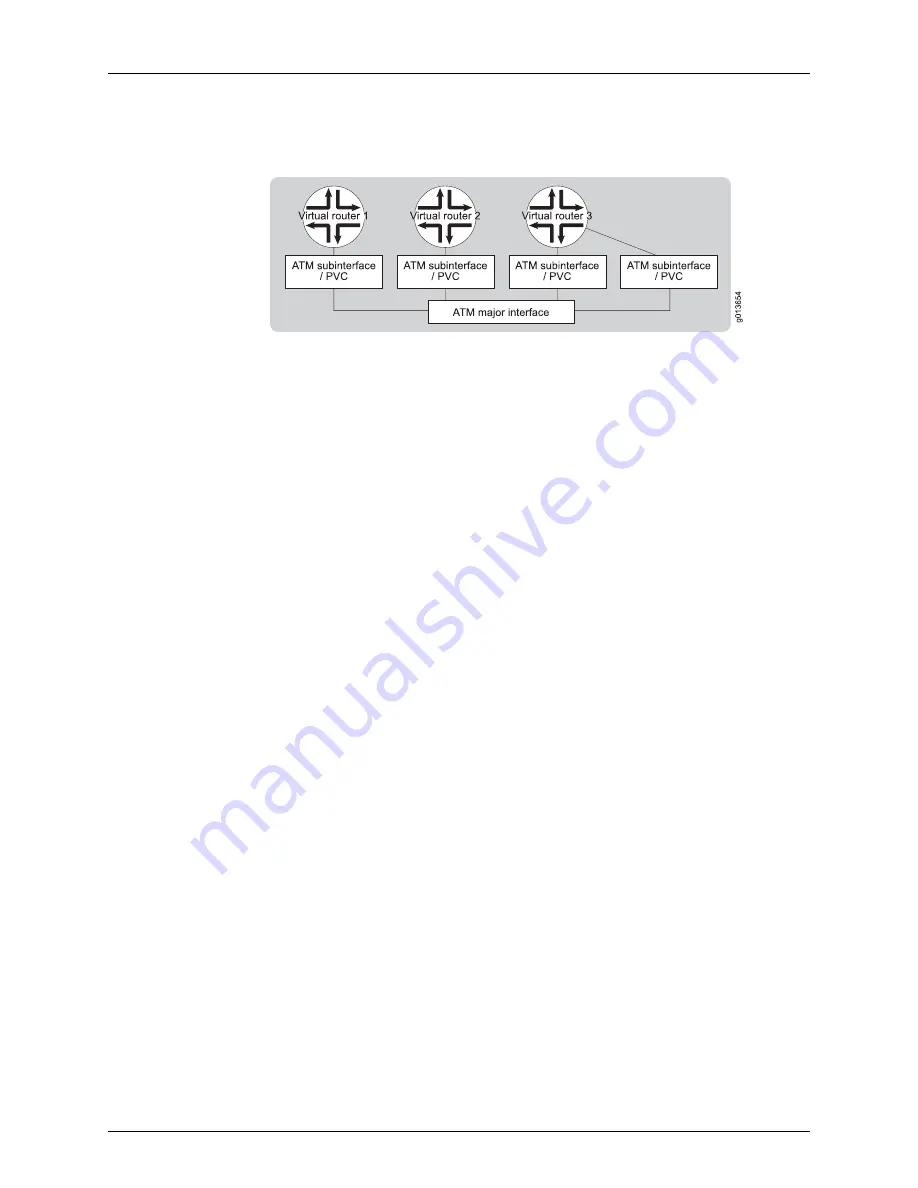
Figure 28: Virtual Routers
E Series router
VRs and VRFs are tools for implementing VPNs.
Routing Protocols
Your router implements the VRs by maintaining a separate instance of each data structure
for each VR and allowing each protocol (for example, TCP/UDP, RIP, OSPF, and IS-IS)
to be enabled on a case-by-case basis. A table of router interfaces associates user
connections (for example, PPP or ATM) with one or more IP interfaces within a VR.
VPNs and VRFs
Your router supports VPNs and VRFs. For information about VPNs and VRFs, see
JunosE
BGP and MPLS Configuration Guide
.
VPNs
A VPN is a set of sites attached to a common network, but whose data is handled
separately from that common network.
VPNs enable private IP traffic to travel over a public TCP/IP network by tunneling that
traffic between VPN member sites. Different levels of security are available depending
on the security of the tunnel used between sites.
Your router supports VPNs consisting of VRs or VRFs. See
RFC 2547—BGP/MPLS VPNs
(March 1999).
. Additionally, your router supports tunnels built from GRE, IPSec, L2TP,
MPLS, and tunnels built from layer 2 circuits, such as Frame Relay and ATM.
VRFs
A VRF is a virtual routing and forwarding instance that exists within the context of a VR.
The VRF provides forwarding information to your router. The system looks up a packet’s
destination in the VRF associated with the interface on which the packet is received. In
general, any application that can be enabled in a VR can be enabled in a VRF. VRFs are
generally associated with the VPN behavior described in
RFC 4364—BGP/MPLS IP Virtual
Private Networks (VPNs)
.
When a VRF receives an update message, it needs to know whether it should add the
route to its routing table. Similarly, when a VRF sends update messages, it needs to
identify the VPNs that it wants to receive the updates. See
JunosE BGP and MPLS
Configuration Guide
.
Copyright © 2010, Juniper Networks, Inc.
526
JunosE 11.3.x System Basics Configuration Guide
Summary of Contents for JUNOSE 11.3
Page 6: ...Copyright 2010 Juniper Networks Inc vi...
Page 8: ...Copyright 2010 Juniper Networks Inc viii JunosE 11 3 x System Basics Configuration Guide...
Page 24: ...Copyright 2010 Juniper Networks Inc xxiv JunosE 11 3 x System Basics Configuration Guide...
Page 32: ...Copyright 2010 Juniper Networks Inc 2 JunosE 11 3 x System Basics Configuration Guide...
Page 146: ...Copyright 2010 Juniper Networks Inc 116 JunosE 11 3 x System Basics Configuration Guide...
Page 166: ...Copyright 2010 Juniper Networks Inc 136 JunosE 11 3 x System Basics Configuration Guide...
Page 432: ...Copyright 2010 Juniper Networks Inc 402 JunosE 11 3 x System Basics Configuration Guide...
Page 488: ...Copyright 2010 Juniper Networks Inc 458 JunosE 11 3 x System Basics Configuration Guide...
Page 524: ...Copyright 2010 Juniper Networks Inc 494 JunosE 11 3 x System Basics Configuration Guide...
Page 554: ...Copyright 2010 Juniper Networks Inc 524 JunosE 11 3 x System Basics Configuration Guide...
Page 566: ...Copyright 2010 Juniper Networks Inc 536 JunosE 11 3 x System Basics Configuration Guide...
Page 588: ...Copyright 2010 Juniper Networks Inc 558 JunosE 11 3 x System Basics Configuration Guide...
Page 613: ...PART 3 Index Index on page 585 583 Copyright 2010 Juniper Networks Inc...
Page 614: ...Copyright 2010 Juniper Networks Inc 584 JunosE 11 3 x System Basics Configuration Guide...
Page 632: ...Copyright 2010 Juniper Networks Inc 602 JunosE 11 3 x System Basics Configuration Guide...

